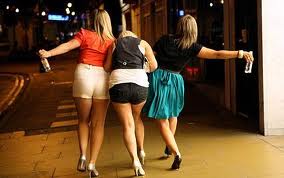News related to painkiller addiction and opioid overdoses has increased over the past decade alongside the rate of addiction with few tell all explanations as to why. Also mysterious is the rate of relapse among those addicted to opiates compared to other drugs. Painkillers are killing people at an alarming rate and more people are getting hooked everyday. According to the Partnership for a Drug Free America, there are 2,500 teens in the US who try prescription drugs to get high for the first time each day. Many become easily addicted after they experiment with painkillers. A new study published this week by Charles R. Drew University of Medicine and Science in Los Angeles sheds some light on why painkiller addiction may be so hard to kick for some.
The study suggests that a missing brain enzyme makes some people more susceptible to opioid addiction than others. Researchers removed the enzyme called prohormone convertase 2 (PC2) in mice. This enzyme activates otherwise dormant hormones in the brain and these hormones were found to increase after long-term treatment of morphine. When researchers removed this enzyme, concentrations of the opioid receptors increased in the brain regions related to addiction. When this enzyme is present it regulates the addiction response to opioids in the brain. Although these were preliminary studies, researchers like Theodore C. Friedman, MD, PhD who conducted the study will follow up with similar studies in the near future.
While this study may serve as a partial explanation as to how addiction to opiates occurs, it doesn’t answer why the rate of addiction has reached epidemic levels over the last decade. Many say that the access to painkillers is why addiction rates are so high. A study by Richard Miech, Ph.D. of the University of Colorado Denver explains, “From 1997 to today, legal prescriptions for painkillers increased from 20 million to 160 million a year – a fourfold increase.” Greater access combined with other explanations – like the missing PC2 enzyme – answers some the questions concerning the national epidemic. However, as with many aspects related to addiction the “why” or “how” is often elusive. While people search for explanations, addiction treatment and recovery is most important and works without knowing all the facts about why and how people became addicted in the first place.
If you are concerned about opiate abuse, our young adult and adult addiction programs at Harmony Foundation help people recover from painkiller addiction.
